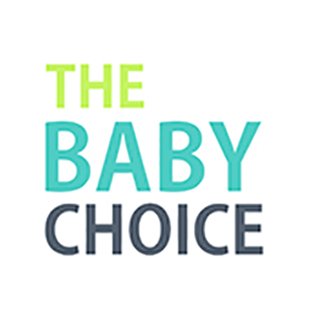Phonics instruction is a critical component of early literacy development, providing children with the foundational skills necessary for reading and writing. However, not all learners are the same, and phonics instruction may not be effective for every student.
In order to ensure that all students are able to access and benefit from phonics instruction, differentiated approaches must be employed to meet the diverse needs of learners.
This article explores how teachers can adapt their teaching strategies and tools to create individualized lesson plans for diverse learners. By providing ongoing assessment and feedback, building a supportive learning environment, and encouraging learner autonomy and responsibility, teachers can effectively differentiate phonics instruction to meet the needs of every student.
Additionally, this article highlights the benefits of individualized approaches to phonics instruction, including increased engagement, motivation, and academic success for all learners.
Key Takeaways
- Differentiated phonics instruction is crucial for meeting the diverse needs of learners.
- Setting clear goals and aligning objectives with standards is important in creating individualized lesson plans.
- Providing ongoing assessment and feedback is necessary for ensuring progress and identifying areas for individualized instruction.
- Creating a supportive learning environment involves using inclusive language, valuing diversity, and promoting self-directed learning.
Understanding the Needs of Diverse Learners
An understanding of the unique characteristics and needs of diverse learners is crucial for effective differentiation in phonics instruction. Teachers must be culturally sensitive to the backgrounds and experiences of their students in order to provide instruction that is meaningful and relevant.
Differentiated instruction is key in meeting the needs of diverse learners, as it allows for individualized approaches that address specific learning styles, strengths, and challenges.
Cultural sensitivity is essential in phonics instruction, as students may come from a wide range of cultural and linguistic backgrounds. Teachers must be aware of potential cultural biases and adjust their instruction accordingly.
For example, a teacher may need to provide additional support for English Language Learners who are unfamiliar with certain sounds or letters in the English language. Similarly, a teacher may need to be aware of differences in phonetic systems across languages and provide instruction that is sensitive to these differences.
By being culturally sensitive, teachers can create a safe and inclusive learning environment that supports the needs of all learners.
Adapting Teaching Strategies and Tools
Adapting teaching strategies and tools involves tailoring instructional materials to meet the specific needs of students, taking into account their unique learning styles and abilities. One way to do this is by adapting materials, such as using visual aids, manipulatives, or technology to enhance student learning. For example, students with visual impairments may benefit from materials that are tactile, such as raised lettering or Braille. English language learners may benefit from the use of real-life objects or pictures to help them understand abstract concepts.
Another way to adapt teaching strategies and tools is by modifying activities to better suit the needs of students. This may involve altering the pace of instruction, providing additional support or scaffolding, or allowing for more opportunities for practice. For example, a teacher may provide additional time for students to complete an activity, or provide additional support through the use of a graphic organizer.
Students with learning disabilities may benefit from modifications such as breaking down tasks into smaller steps or providing alternative methods of assessment. By adapting materials and modifying activities, teachers can create a learning environment that is inclusive and meets the needs of diverse learners.
Creating Individualized Lesson Plans
In creating individualized lesson plans, teachers must set clear goals and objectives for their students. This allows for a focused approach to instruction and helps students understand what they are expected to learn.
The selection of appropriate materials is also crucial in ensuring that students are engaged and challenged at appropriate levels.
Finally, teachers must differentiate instruction to meet the diverse learning needs of their students, tailoring their lesson plans to address individual strengths and weaknesses.
Setting Goals and Objectives
To effectively differentiate phonics instruction for diverse learners, it is important to establish clear goals and objectives that address individual learning needs and align with curriculum standards. Setting measurable goals is the first step in creating individualized lesson plans that cater to the unique needs of each learner. These goals should be specific, measurable, achievable, relevant, and time-bound (SMART).
By setting SMART goals, teachers can ensure that they are targeting the specific areas of phonics that each learner needs to improve upon, and that progress can be tracked and measured over time.
Once goals have been established, the next step is to align objectives with standards. This involves breaking down the goals into smaller, more manageable objectives that align with the curriculum standards for phonics instruction. Objectives should be specific, measurable, and achievable, and should be designed to help learners meet the overall goal.
By aligning objectives with standards, teachers can ensure that they are providing instruction that is relevant and meaningful, and that learners are developing the skills and knowledge they need to succeed in reading and writing.
Selecting Appropriate Materials
The selection of appropriate materials is crucial in ensuring that students receive effective and engaging instruction in phonics. Choosing appropriate materials that are aligned with the learners’ readiness levels is essential in providing individualized instruction.
To do this, teachers must assess the learners’ skills and knowledge before selecting materials that can cater to their needs. Assessing learner readiness involves identifying the learners’ current level of phonics understanding, their interests, and their preferred learning styles.
This information helps teachers choose materials that are engaging and relevant to the learners. For example, if a learner is struggling with letter-sound correspondence, the teacher may select materials that focus on this area, such as flashcards or phonics games.
By selecting appropriate materials, teachers can ensure that learners are motivated to learn and that they receive instruction that is tailored to their individual needs.
Differentiating Instruction
Customizing education based on each student’s unique abilities and needs requires teachers to adjust their teaching style and materials to better meet the needs of their students. This is especially true when it comes to phonics instruction, as students come from different backgrounds and have different learning styles. Teachers need to be able to identify which students need extra support in phonics and create individualized approaches that cater to their strengths and weaknesses.
One way to differentiate phonics instruction is through assessment strategies that help teachers identify where each student is at in their phonics development. This could include informal assessments such as observation, running records, and teacher checklists or more formal assessments such as phonics assessments or standardized tests. Once teachers have identified students’ phonics needs, they can create differentiated activities that cater to their strengths and weaknesses. These activities could include small group instruction, peer tutoring, or technology-based activities that allow students to work at their own pace. By differentiating phonics instruction, teachers can better meet the needs of their diverse learners and help them achieve success in reading.
| Assessment Strategies | Differentiated Activities | Benefits | |||
|---|---|---|---|---|---|
| Running records | Small group instruction | Allows teachers to identify students’ reading level and adjust instruction accordingly | |||
| Teacher checklists | Peer tutoring | Encourages student collaboration and promotes a sense of community in the classroom | |||
| Phonics assessments | Technology-based activities | Provides students with opportunities to practice phonics skills in a fun and engaging way | |||
| Standardized tests | Independent reading activities | Allows students to practice phonics skills in a self-directed manner | |||
| Observation | Multi-sensory activities | Enables students to engage with phonics material in a variety of ways, promoting deeper learning and understanding | Collaborative learning | Supports peer-to-peer interaction and discussion, allowing students to learn from one another and build their phonics skills together. |
Providing Ongoing Assessment and Feedback
Providing ongoing assessment and feedback is crucial in ensuring that learners are making progress in their phonics skills.
Monitoring learner progress can be achieved through a variety of methods, such as formative assessments, observations, and student self-reflection.
Additionally, providing timely feedback allows learners to make necessary adjustments and improvements to their phonics skills, ultimately leading to greater success in reading.
Monitoring Learner Progress
Assessing learner progress is a crucial aspect of phonics instruction, as it allows for the identification of areas where individualized instruction may be necessary. Tracking performance is an effective way to monitor learner progress, as it provides teachers with a clear picture of how well students are mastering phonics skills.
By regularly tracking performance, teachers can quickly identify areas where students may be struggling and adjust their instruction accordingly.
Analyzing data is another important tool for monitoring learner progress. By analyzing data from assessments and performance tracking, teachers can identify patterns and trends in student performance. This information can help teachers create targeted interventions for individual students or groups of students who may be struggling with specific phonics skills.
Additionally, analyzing data can help teachers identify areas where their instruction may need to be adjusted to better meet the needs of their students.
By regularly monitoring learner progress and analyzing data, teachers can ensure that their phonics instruction is effective and responsive to the needs of all learners.
Providing Timely Feedback
One essential aspect of effective phonics instruction involves promptly giving feedback to learners, allowing them to adjust their strategies and improve their performance. Timely feedback is crucial because it helps learners identify their strengths and weaknesses, leading to a better understanding of their progress.
When learners receive feedback promptly, they can adjust their approaches and improve their performance in the next session. Additionally, timely feedback can motivate learners, as it provides them with a sense of accomplishment and highlights their achievements.
Providing effective feedback involves both the delivery and impact. Feedback should be delivered in a clear and concise manner, ensuring that learners understand the areas they need to focus on. It should also be personalized to meet the needs of individual learners, as different learners require different types of feedback.
Feedback that is specific, actionable, and focused on the task at hand can have a significant impact on learners’ performance. Effective feedback can help learners develop a growth mindset, where they view challenges as opportunities to learn and improve.
Ultimately, providing timely and effective feedback can help learners develop their phonics skills, leading to better reading comprehension and overall academic success.
Building a Supportive Learning Environment
Creating a positive and inclusive classroom culture is essential for building a supportive learning environment that caters to the diverse needs of all learners. This involves creating a welcoming atmosphere that fosters a sense of belonging for all students, regardless of their background, abilities, or learning styles. Teachers can achieve this by implementing strategies such as using inclusive language, acknowledging and valuing diversity, and providing opportunities for collaborative learning.
One way to create a supportive learning environment is through the use of a classroom contract. This is a document that outlines the expectations and responsibilities of both the teacher and the students. It can include guidelines for behavior, communication, and participation in class activities. By involving students in the creation of this contract, teachers enable them to take ownership of their learning and feel more invested in the classroom community. Additionally, teachers can use positive reinforcement and praise to encourage students and build their confidence. By providing a safe and supportive learning environment, teachers can help students develop the necessary skills and confidence to succeed academically and socially.
| Strategies for Building a Supportive Learning Environment | Examples |
|---|---|
| Use inclusive language | Avoid using gender-specific pronouns (e.g., "he"or "she"), and instead use gender-neutral terms like "they"or "students." |
| Acknowledge and value diversity | Celebrate cultural events and holidays, incorporate diverse perspectives and experiences in classroom discussions and materials. |
| Provide opportunities for collaborative learning | Encourage group work, peer tutoring, and cooperative learning activities. |
| Use positive reinforcement and praise | Acknowledge and reward students for their efforts, achievements, and positive behavior. |
Table 1: Strategies for Building a Supportive Learning Environment. This table provides examples of strategies that teachers can use to create a positive and inclusive classroom culture that fosters a sense of belonging for all students. These strategies include using inclusive language, acknowledging and valuing diversity, providing opportunities for collaborative learning, and using positive reinforcement and praise. By implementing these strategies, teachers can create a supportive learning environment that caters to the diverse needs of all learners.
Encouraging Learner Autonomy and Responsibility
This discussion focuses on two key points for encouraging learner autonomy and responsibility: promoting self-directed learning and teaching self-regulation skills.
Self-directed learning refers to the ability of learners to take charge of their own learning process, setting goals, identifying resources, and monitoring their progress.
Teaching self-regulation skills, on the other hand, involves helping learners develop the ability to manage their own thoughts, emotions, and behaviors, which are essential for successful learning.
By promoting these two key points, educators can help learners become more independent, motivated, and effective learners.
Promoting Self-Directed Learning
Encouraging self-directed learning is vital when differentiating phonics instruction for diverse learners, as it allows them to take control of their own learning and progress at their own pace. Self-directed learning refers to the process by which learners take ownership of their learning and become responsible for their own progress. This approach fosters independence, and learners are able to set their own goals and make decisions about how they will achieve them.
To promote self-directed learning, educators can incorporate self-assessment strategies into their phonics instruction. This can involve providing learners with tools to track their progress and reflect on their learning. Educators can also encourage learners to take responsibility for their own learning by setting individualized goals and providing opportunities for learners to choose their own learning activities.
Additionally, educators can support self-directed learning by providing learners with feedback that is tailored to their individual needs and progress. By promoting self-directed learning, educators can create a supportive and empowering learning environment that fosters independence and helps diverse learners succeed.
Teaching Self-Regulation Skills
Developing self-regulation skills is an essential factor for successful phonics learning for a varied group of students. It involves the development of metacognition, which is the ability to reflect on one’s own thinking processes and regulate one’s own learning. Promoting self-reflection is also important in developing self-regulation skills as it allows learners to become more aware of their own strengths and weaknesses, and therefore better able to monitor their own progress.
One way to teach self-regulation skills is through the use of graphic organizers. Graphic organizers provide visual representations of information and help learners to organize their thoughts and ideas. They can be used to help learners reflect on their own learning, set goals, and plan how to achieve those goals. By using graphic organizers, learners can become more aware of their own learning processes and the strategies they use to learn. This helps them to develop metacognition and self-regulation skills, which are essential for successful phonics learning.
Evaluating the Effectiveness of Instruction
The evaluation of instruction is an essential component of effective teaching.
In order to determine the effectiveness of instruction, data must be collected and analyzed to monitor progress.
Based on this data, adjustments can be made to instruction as needed to ensure that all learners are making progress towards their goals.
Using Data to Monitor Progress
Monitoring progress through the use of data is a crucial aspect of differentiating phonics instruction for diverse learners and ensuring their academic success. By using assessments, teachers can gather information about each student’s current level of phonics knowledge and skills, identify areas of strength and weakness, and adjust instruction accordingly. This process allows for individualized approaches to teaching phonics and ensures that each student’s needs are being met.
Celebrating progress is also an important component of using data to monitor student progress. By acknowledging and celebrating the growth that students have made, teachers can motivate them to continue working hard and striving towards their goals. This positive reinforcement can help build students’ confidence in their abilities and encourage them to take ownership of their learning.
Additionally, celebrating progress can help create a supportive classroom culture where students feel valued and encouraged to support one another in their learning.
Adjusting Instruction as Needed
In the previous subtopic, we discussed the importance of using data to monitor progress when teaching phonics to diverse learners. By regularly assessing students’ phonemic awareness and decoding skills, teachers can determine which areas require additional support and tailor their instruction accordingly.
Now, let us shift our focus to the next step in the process: adjusting instruction as needed. Adapting instruction requires flexibility and creativity on the part of the teacher. It involves using a variety of teaching strategies and materials to meet the unique needs of each student in the class.
For example, some students may benefit from explicit, direct instruction, while others may learn better through hands-on activities or games. By adapting instruction to fit the learning styles and preferences of each student, teachers can create a more engaging and effective learning experience for all.
Personalizing learning is a key aspect of adapting instruction. Teachers must be able to differentiate their instruction to meet varied needs of diverse learners. Personalizing learning involves using a range of strategies to help all students progress toward their individual goals. This can include offering additional support to struggling learners, providing extension activities for advanced learners, and using technology to enhance learning.
By personalizing instruction, teachers can help each student reach their full potential and achieve academic success.
The Benefits of Individualized Approaches to Phonics Instruction
Individualized approaches to phonics instruction have been found to offer numerous benefits to learners of diverse backgrounds. These benefits include:
- Enhancing literacy skills
- Improving learner engagement and motivation
- Promoting equity and inclusion
By tailoring instruction to individual learners, teachers can address specific needs and effectively support their progress towards achieving literacy goals.
Enhancing Literacy Skills
Enhancing literacy skills is crucial for ensuring all learners, regardless of their background or ability, have the opportunity to succeed academically and beyond. Phonics instruction that is tailored to individual learners can significantly improve their fluency and vocabulary. By customizing instruction, teachers can create a learning environment that supports the unique needs of each student, which can help them to develop stronger reading skills.
To enhance literacy skills, teachers can use a variety of methods, including incorporating technology into instruction, utilizing small group work, and providing individualized feedback. Technology can be particularly useful for learners who struggle with traditional teaching methods. For example, interactive games and applications that use visuals and audio can help learners to better understand phonics concepts.
Small group work can also be effective, as it provides opportunities for students to work collaboratively and receive feedback from their peers. Lastly, providing individualized feedback can help learners to identify areas that they need to improve on, while also reinforcing the skills they have already mastered.
By using these methods, teachers can enhance literacy skills and promote academic success for all learners.
Improving Learner Engagement and Motivation
To increase learner engagement and motivation, educators can implement strategies that foster a sense of curiosity and excitement in the learning process.
One effective way to motivate learners is by incorporating real-world examples into the lesson plan. This approach allows students to see the practical application of the knowledge they are acquiring, making the learning experience more relevant and meaningful.
For example, a science teacher may use a hands-on experiment to demonstrate the principles of physics in action, or an English teacher may use current events as a way to teach persuasive writing skills. By connecting the subject matter to real-life situations, educators can help students see the value of what they are learning and increase their motivation to engage with the material.
Another strategy for improving learner engagement is to challenge students to think critically and creatively. This can be achieved through activities that require problem-solving or open-ended questions that allow for multiple interpretations.
By encouraging students to think beyond the surface level of the material, educators can foster a sense of curiosity and exploration that keeps learners engaged. For example, a math teacher may ask students to solve a complex word problem that requires them to apply multiple concepts, or an art teacher may ask students to create a piece that represents a certain emotion or idea.
By providing opportunities for students to exercise their creativity and critical thinking skills, educators can create a more dynamic and engaging learning environment.
Promoting Equity and Inclusion
Creating a welcoming and inclusive classroom environment is essential for promoting equity in education. Equity initiatives and inclusion strategies are important components of differentiated phonics instruction for diverse learners. Teachers can promote equity by recognizing and addressing the unique needs of each learner in their classroom. This can include providing differentiated instruction, offering accommodations, and using culturally responsive teaching strategies that honor the diversity of their students.
Inclusion strategies are also crucial for promoting equity in phonics instruction. These strategies involve creating a classroom culture that values and celebrates diversity. Teachers can use a variety of methods, such as multicultural literature, to help students see themselves and others in the stories they read. They can also foster an environment of respect and acceptance by encouraging students to share their experiences and perspectives. By promoting equity and inclusion in phonics instruction, teachers can help all students succeed academically and feel valued and respected in the classroom.
| Equity Initiatives | Inclusion Strategies | |||
|---|---|---|---|---|
| Providing differentiated instruction | Using multicultural literature | |||
| Offering accommodations | Encouraging student perspectives | |||
| Using culturally responsive teaching strategies | Fostering a culture of respect and acceptance | Creating diverse learning communities | Implementing anti-bias curriculum |
Frequently Asked Questions
How do you address cultural and linguistic diversity in phonics instruction?
Cultural sensitivity and multilingual approaches are crucial when addressing diversity in phonics instruction.
It is important to acknowledge and respect the various cultural and linguistic backgrounds of the learners.
Phonics instruction should be adapted to the learner’s needs, taking into consideration their language background, experiences, and learning style.
Providing multilingual resources, such as alphabet charts and word lists in the learner’s native language, can help bridge the gap between their first language and English.
Incorporating diverse literature and stories that reflect the learners’ cultural backgrounds can also enhance their motivation and engagement.
Ultimately, a culturally sensitive and multilingual approach to phonics instruction can support the development of language and literacy skills for all learners.
What role do technology and multimedia tools play in individualized phonics instruction?
The role of technology and multimedia tools in phonics instruction is significant in providing individualized learning experiences for diverse learners.
Using interactive apps, students can engage in hands-on activities that promote reading skills development.
Incorporating multimedia resources such as videos, audio recordings, and digital books can enhance phonemic awareness, phonics, and vocabulary instruction.
These tools can be especially beneficial for English language learners and students with learning disabilities, as they provide visual and auditory support to aid in comprehension and retention of phonics concepts.
Overall, technology and multimedia tools offer innovative approaches to phonics instruction that can cater to the diverse needs of learners.
How do you address the needs of learners with learning disabilities or difficulties in phonics instruction?
Differentiated instruction is key to addressing the needs of learners with learning disabilities or difficulties in phonics instruction.
Effective strategies include accommodations for disabilities, such as providing assistive technology or modifying instructional materials to meet the needs of individual learners.
Multi-sensory approaches, such as visual aids and hands-on activities, can also be effective in reaching diverse learners.
Additionally, providing opportunities for frequent review and reinforcement, as well as individualized feedback and support, can help learners with disabilities master phonics skills.
Teachers must also be knowledgeable about the specific disabilities and needs of their students, and work closely with parents and other professionals to develop effective strategies for differentiated phonics instruction.
How do you balance the need for individualized instruction with the demands of a classroom setting?
Balancing the need for individualized instruction with the demands of a classroom setting can be challenging. Collaborative planning among teachers is crucial to ensure that each student’s needs are met.
Teachers can work together to identify students who need extra support and strategize ways to provide individualized instruction within the classroom setting. Classroom management is also important in ensuring that individualized instruction does not disrupt the learning of other students.
Teachers can create a structured and organized classroom environment where students know what is expected of them and can work independently or in small groups while the teacher works with individual students.
By working collaboratively and implementing effective classroom management strategies, teachers can balance the need for individualized instruction with the demands of a classroom setting.
How do you involve parents and caregivers in the individualized phonics instruction process?
Involving caregivers and parental engagement in the phonics instruction process can be a crucial factor in a student’s success. Parents can provide valuable information about their child’s learning style, strengths, and weaknesses, which can help teachers tailor instruction to meet individual needs. Caregivers can also reinforce phonics instruction at home by practicing the same skills and strategies learned in school.
In addition, involving parents and caregivers in the process promotes a sense of partnership between school and home, which can lead to increased student motivation and engagement. Teachers can involve parents and caregivers by providing regular updates on their child’s progress, offering suggestions for at-home practice, and inviting them to participate in classroom activities and events.
Effective communication and collaboration between teachers and parents/caregivers can help ensure that phonics instruction is individualized and supportive of diverse learners.
Conclusion
In conclusion, individualized approaches to phonics instruction are essential for meeting the diverse needs of learners. Teachers must first understand their students’ needs and abilities, and then adapt their teaching strategies and tools accordingly.
Creating personalized lesson plans, providing ongoing assessment and feedback, and building a supportive learning environment are all critical components of effective instruction.
Encouraging learner autonomy and responsibility and evaluating the effectiveness of instruction are also important steps in ensuring that students are successful in their phonics instruction.
By implementing individualized approaches, teachers can provide students with the support and resources they need to develop strong phonics skills and become confident readers. Ultimately, these approaches can lead to improved academic outcomes and a more positive, inclusive learning environment for all students.

















